Search Results
Fine Jewelry University Articles matching: “Lab created alexandrite”
Showing only FJU Article results. Click here to show all results.
Fine Jewelry University (Show All FJU Articles)
-

Gem in the Spotlight: Alexandrite
… by day, ruby by night, more expensive than diamond and more illustrious than sapphire, emerald, or even ruby, alexandrite has been known around the world as one of the most sought-after gems for the better part of 200 years. But, what makes … bluish-green in daylight, fluorescent light, and some LED light. Under incandescent light, candle, and firelight, alexandrite appears purplish-red. This is because of how the trace element chromium interacts with alexandrite’s crystal structure…
-
Synthetic Gems: The Whole Story
Ruby, sapphire, emerald and alexandrite are very beautiful gems and very rare in their stunning beauty. These four gems have been coveted by rulers and the … identify as synthetic. Both, I feel, are impossible to identify in a piece of jewelry. Synthetic ruby, sapphire, alexandrite and emerald are very complex because there are different ways to make them. The inexpensive way to make the synthetic … synthetics are so well made it is impossible to id them in jewelry and can only be positively identified in gem labs with millions of dollars worth of equipment and world class personnel. Synthetic diamonds on the high end and synthetic…
-

Laser Jewelry Repair
… spots. The work is so smooth that even an expert can’t detect the repair work once it is polished. The weld joints created by the laser are stronger than traditional solder. The laser uses extremely focused heat and the weld can be …
-
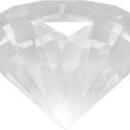
Fake Diamonds: The Great Diamond Attack
… all say that they were someone and the contestant would try to find out who was the real person. Technology has created many new diamonds and diamond lookalikes. “What is a real diamond?” is a difficult question these days. And the problem … likes. Modern science has developed a man made gem that can fake out the standard diamond tester. Moissanite is lab–created, silicon carbide, and it gives a positive reading on a diamond tester. But science fights back with a Moissanite …
-
The Birthstones
…believed to be a symbol of faith and loyal friendship. Learn more about Emerald June’s Birthstone: Pearl (Moonstone, Alexandrite, Rhodolite Garnet) Pearls are often associated with love and tears, they were dedicated to Aphrodite, the Greek … nature, ready to be admired and worn to display all their beauty. Alternative gemstones for June include moonstone, alexandrite, and rhodolite garnet. Learn more about Pearl and Alexandrite July’s Birthstone: Ruby Ruby’s rarity and beauty has …
-
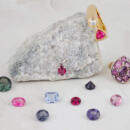
Gem in the Spotlight: Spinel
… and perfected to create spinel in even more colors than it is naturally found in. Because of how easily it can be created in a lab, synthetic spinel has been used to imitate many other gemstones (ruby, sapphire, tourmaline, zircon, etc.). … of the reason why most people have been slow to appreciate natural spinel in its own right. Interestingly, most lab–created spinel has a slightly higher refractive index than natural spinel, and that, along with inclusions can be used to …
-
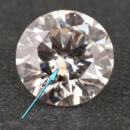
What Are Lab Grown Diamonds?
… are man-made crystals with the same crystal structure and chemical composition as the specific gem that is being created. Therefore, a “synthetic diamond” has the same crystal structure and chemical composition as a natural diamond. The … lab grown diamond stem from how they were made. Lab grown diamonds are man-made in a lab while natural diamonds are created in the earth. Nature is not a controlled, sterile environment, and natural processes vary abundantly. Therefore, the…
-
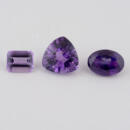
Gem in the Spotlight: Amethyst
…mythology. The word “amethystos,” is derived from the Greek word meaning “not drunken.” It is said that amethyst was created when Dionysus, the god of wine, was angered by an insult from a mortal. In his rage, Dionysus vowed to take revenge …
-
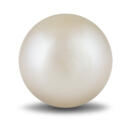
Gem in the Spotlight: Pearl
…even decades, to form, and are found only in a few select locations around the world. The process by which they are created is completely unpredictable, and as a result, natural pearls come in a wide range of shapes, sizes, and colors. They … natural irritant. The resulting pearl is virtually indistinguishable from a natural pearl in appearance, and can be created in a fraction of the time. Because of this, cultured pearls are far more common and affordable than natural pearls. …